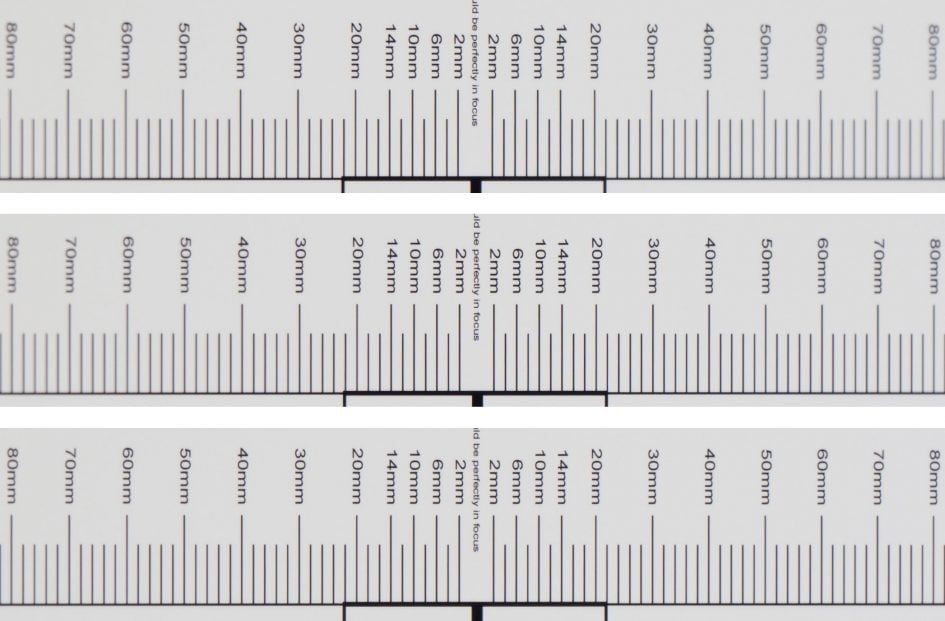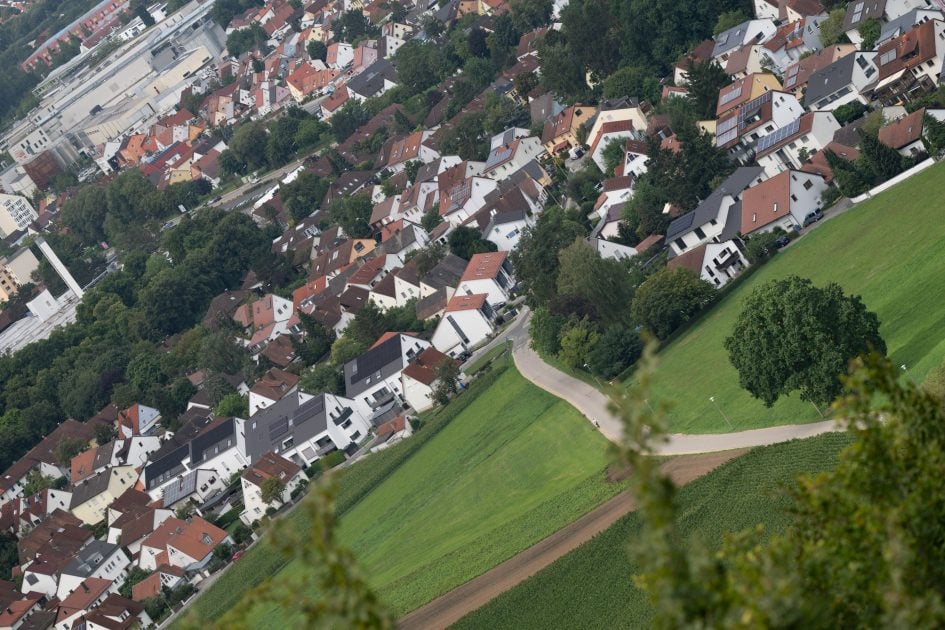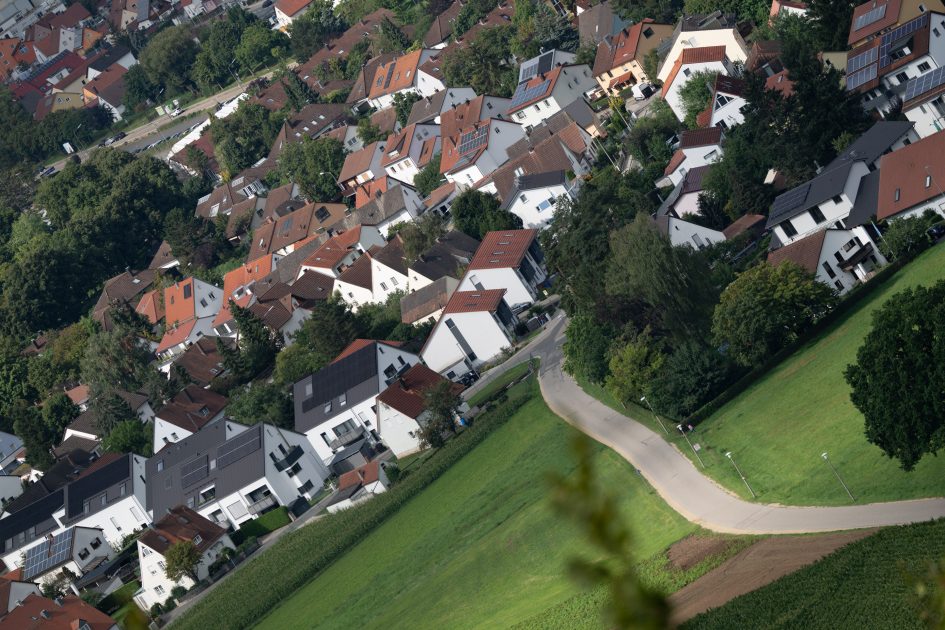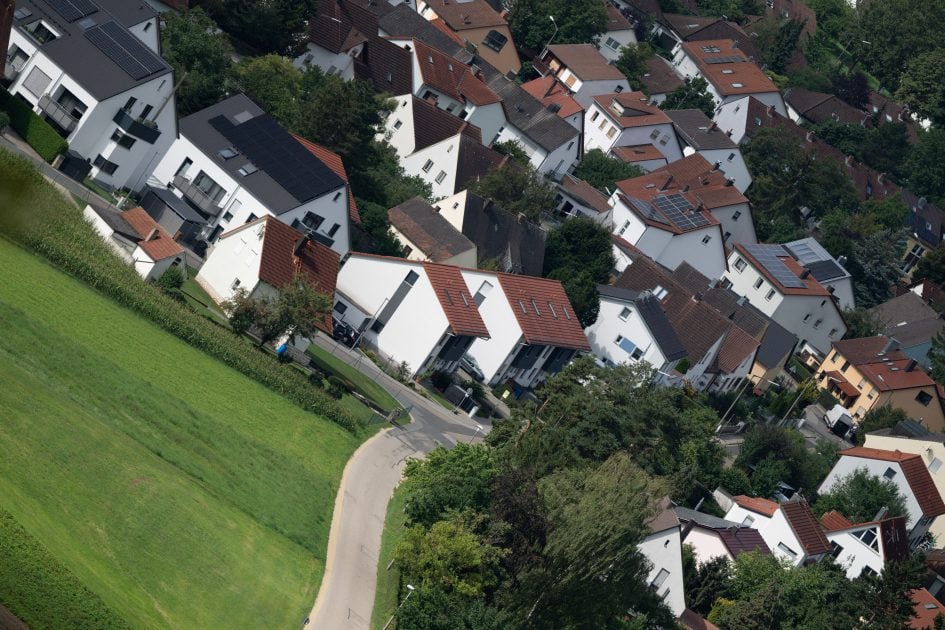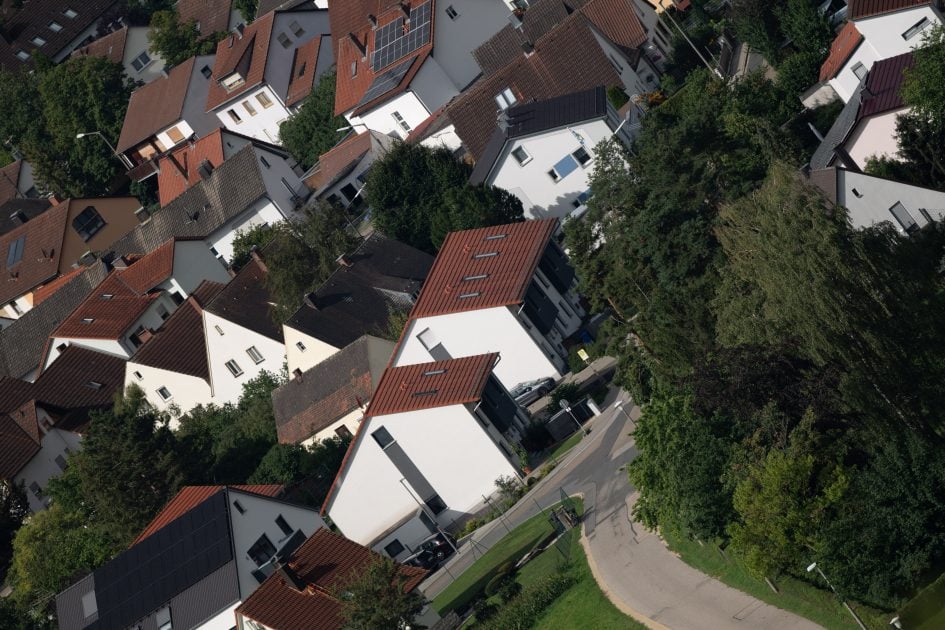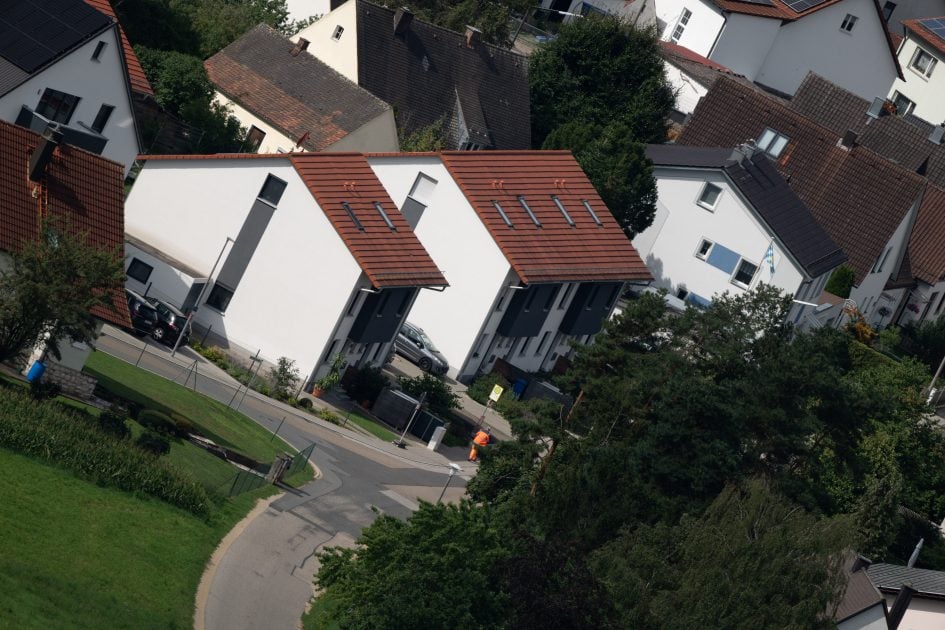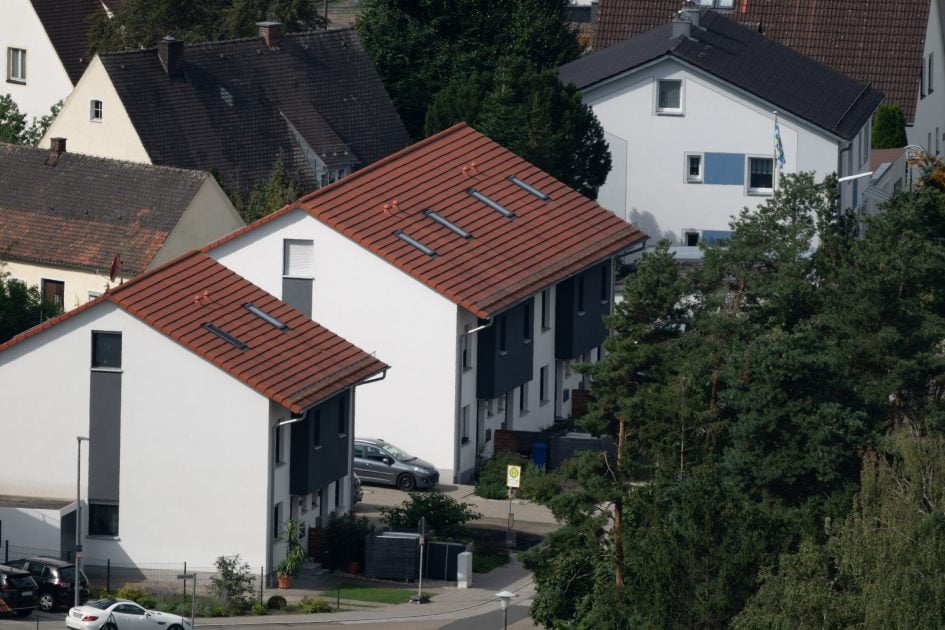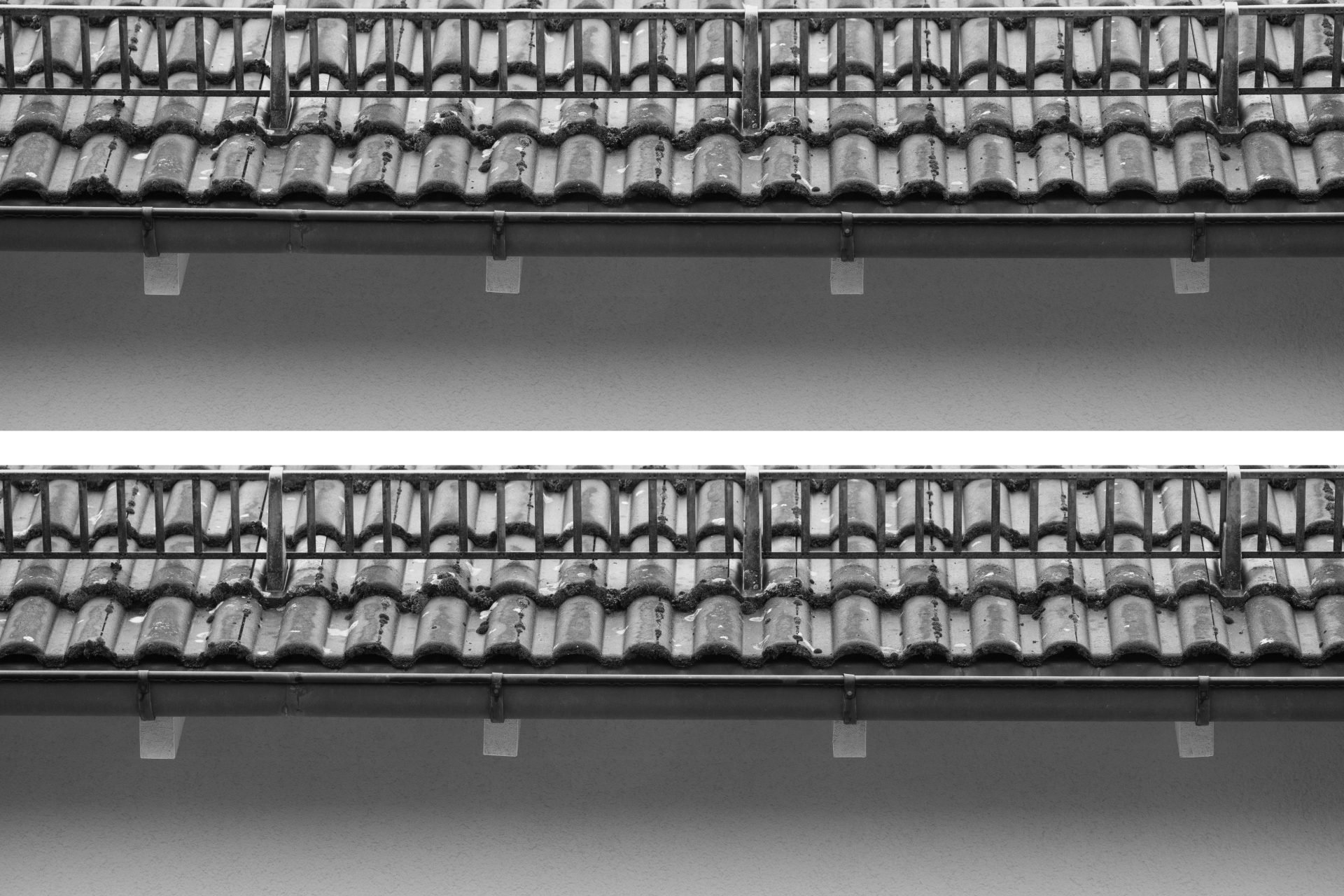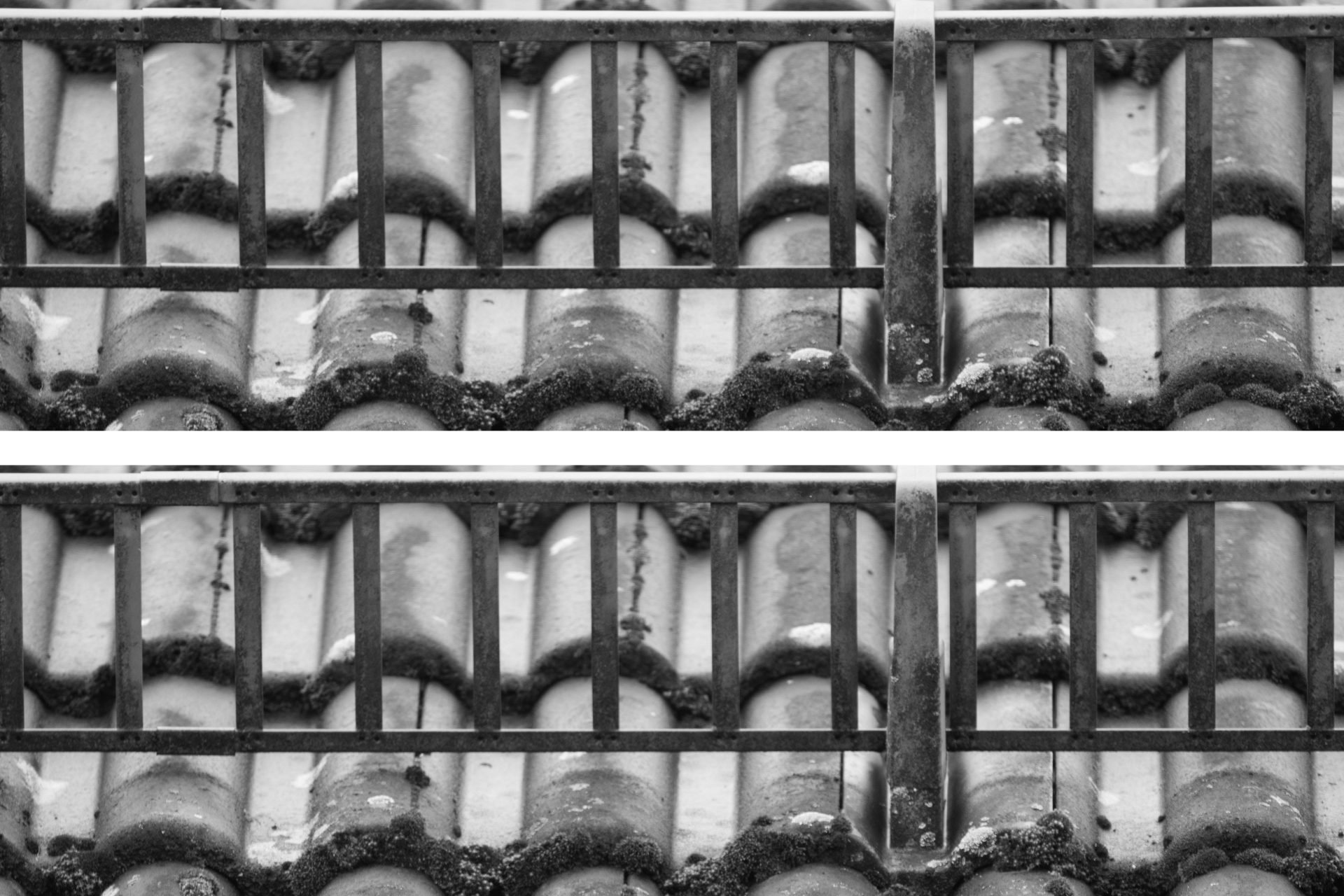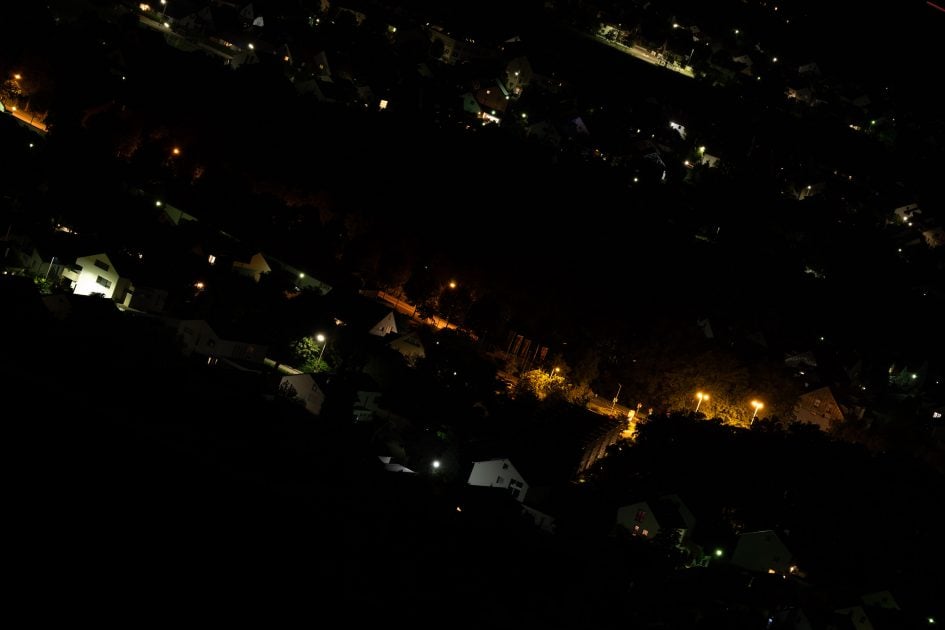Nikon Z 180-600mm f5.6-6.3 VR review
-
-
Written by Thomas
Quality
Longitudinal Chromatic Aberration and focus shift
I tested the Nikon Z 180-600mm f5.6-6.3 VR at the long end for longitudinal color aberrations (loCA, a.k.a. “axial color” or “bokeh CA”) and focus shift. The former can show up as magenta coloration in the foreground and greenish hues in the background and are not easily corrected in post-processing. The lens shows practically no loCA or focus shift:
Nikon Z 180-600mm f5.6-6.3 VR longitudinal Chromatic Aberration (loCA)
100% crops at 600mm f6.3 (top), f8.0 (middle), f11 (bottom); 100% crops, left = foreground, right = background
In all of my test-shots with the the Nikon Z 180-600mm f5.6-6.3 VR I could not detect any noteworthy purple fringing around high-contrast edges or specular highlights in the focus plane or green outlining around background subjects. Very good!
Sharpness and contrast
Let’s have a look at the theoretical performance of the new Nikon Z 180-600mm f5.6-6.3 VR and compare it to the Nikon AF-S 200-500mm f5.6E ED VR and Tamron SP 150-600mm f/5-6.3 Di VC USD G2:
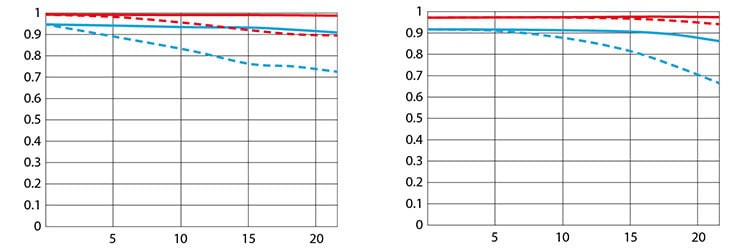
Above: Nikon Z 180-600mm f5.6-6.3 VR, 180mm f5.6 (left), 600mm f6.3 (right)
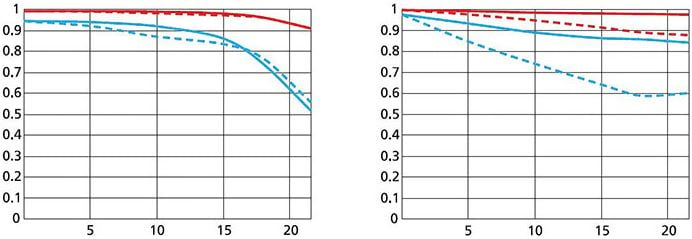
Above: Nikon AF-S 200-500mm f5.6E ED VR, 200mm f5.6 (left), 500mm f5.6 (right)
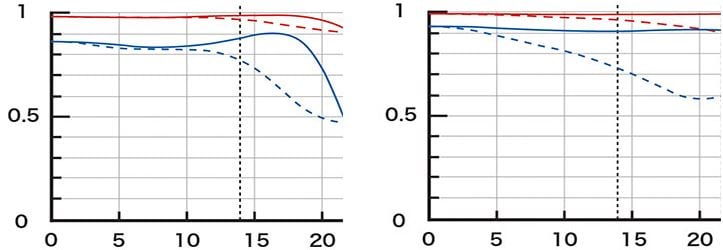
Above: Tamron SP 150-600mm f/5-6.3 Di VC USD G2, 150mm f5.0 (left), 600mm f6.3 (right)
These MTF charts show the computed lens-performance of lenses wide open without influence of diffraction at 10 line-pairs/mm (red) and 30 lp/mm (blue). Higher values are better (more contrast) and the closer the dotted and solid lines are together the less contrast dependents on the orientation of the test-pattern (less astigmatism). The x-axis displays the distance from the optical axis (=center of the sensor) in mm.
From the charts the Nikon Z 180-600mm f5.6-6.3 VR should be pretty contrasty and sharp both at the short and the long end. At the short end it probably is sharper than the F-Nikkor in the corner or the Tamron in the center. At the long end the differences look not as big with the F-Nikkor probably the sharpest lens in the center but developing astigmatism faster and stronger than the Z-Nikkor.
Let’s see how this theoretical performance translates into real life results in the sharpness test based on Siemens-stars shot on a 45MP Nikon Z8. The images are developed in Lightroom 12.5/CRAW 15.5 from RAW to Adobe Color profile with the Adobe-supplied lens profile applied. Noise-reduction is set to 0, sharpening to 50/0.5/36/10 with no extra tone, color, or saturation adjustment. White-balance was adjusted to a neutral white and I did some exposure compensation to make the brightness of all crops match. So you will not see light fall-off in the corners.
The following are all 100% crops!
First up is an overview of the wide-open performance at different focal lengths. You can jump to the detailed results at different apertures and comparisons with other lenses by clicking on the crops of the respective focal length.
Nikon Z 180-600mm f5.6-6.3 VR; 100% crop from near center, DX-corner, FX-corner
Above: 180mm, f5.6
Above: 300mm, f6.0
Above: 400mm, f6.0
Above: 600mm, f6.3
Above: 840mm, f9
Above: 1200mm, f13
Nikon’s Z 180-600mm shows an astonishingly even performance across the full-frame sensor with the FX-corner only getting a bit soft at 600mm. The center is extremely crisp at 180mm and becomes only a tad softer towards 600mm. And the DX-corner is not far behind the center. Using the Z TC-1.4x still produces a good center and DX-corner at 840mm but the FX-corner becomes decidedly soft. The Z TC-2.0x makes the lens look a bit mushy but with more aggressive sharpening you can still produce very usable results at 1200mm focal length. Field curvature is not detectable at 300mm and pretty low at other focal lengths.
Detailed results:
The following 100% crops for each focal length show the Nikon Z 180-600mm f5.6-6.3 VR from wide open down to f11 compared to the Tamron SP 150-600mm f5-6.3 Di VC G2, Nikon Z 100-400 f4.5-5.6 VR S, Nikon Z 400mm f4.5 VR S, and Nikon Z 800mm f6.3 VR S at 180mm, 300mm, 400mm, 600mm, 840mm, and 1200mm. Or you skip the detail and fast-forward to the summary for this chapter.
Performance at 180mm:
Nikon Z 180-600mm f5.6-6.3 VR at 180mm compared; 100% crop from near center, DX-corner, FX-corner

Above: Nikon Z 180-600mm f5.6-6.3 VR at 180mm, f5.6

Above: Tamron SP 150-600mm f5-6.3 Di VC G2 at 190mm, f5.6; also available at f5.0, f8.0, f11 and at 150mm f5.0, f5.6, f8.0, f11

Above: Nikon Z 100-400 f4.5-5.6 VR S at 200mm, f5.6; also available at f5.0, f8.0, f11

Above: Nikon Z 180-600mm f5.6-6.3 VR at 180mm, f8.0; also available at f11
At 180-200mm the Z 180-600 and Z 100-400 look pretty similar across the sensor. And the Tamron is not far behind – except for its softer FX-corner.
Performance at 300mm:
Nikon Z 180-600mm f5.6-6.3 VR at 300mm compared; 100% crop from near center, DX-corner, FX-corner

Above: Nikon Z 180-600mm f5.6-6.3 VR at 300mm, f6.0

Above: Tamron SP 150-600mm f5-6.3 Di VC G2 at 300mm, f5.6; also available at f8.0, f11

Above: Nikon Z 100-400 f4.5-5.6 VR S at 300mm, f5.6; also available at f5.3, f8.0, f11

Above: Nikon Z 180-600mm f5.6-6.3 VR at 300mm, f8.0; also available at f11
Similar results at 300mm: Z 180-600, Z 100-400, and the Tamron are very close in the DX image-circle. At the FX-corner the Z 180-600 is best followed by the Z 100-400 and the Tamron.
Performance at 400mm:
Nikon Z 180-600mm f5.6-6.3 VR at 400mm compared; 100% crop from near center, DX-corner, FX-corner

Above: Nikon Z 180-600mm f5.6-6.3 VR at 400mm, f6.0

Above: Tamron SP 150-600mm f5-6.3 Di VC G2 at 400mm, f6.0; also available at f8.0, f11

Above: Nikon Z 400mm f4.5 VR S at f5.6; also available at f4.5, f8.0, f11

Above: Nikon Z 100-400 f4.5-5.6 VR S at 400mm, f5.6; also available at f8.0, f11

Above: Nikon Z 180-600mm f5.6-6.3 VR at 400mm, f8.0; also available at f11
At 400mm the Z 400mm f4.5 VR S joins the competition and looks very similar to the Z 180-600 with a slightly higher contrast in the DX image-circle and a slightly softer FX-corner. The Z 100-400 is clearly softer now than the Z 180-600 and the Tamron is the softest lens out side the center of the four at 400mm.
Performance at 600mm:
Nikon Z 180-600mm f5.6-6.3 VR at 600mm compared; 100% crop from near center, DX-corner, FX-corner

Above: Nikon Z 180-600mm f5.6-6.3 VR at 600mm, f6.3

Above: Tamron SP 150-600mm f5-6.3 Di VC G2 at 600mm, f6.3; also available at f8.0, f11

Above: Nikon Z 400 f4.5 VR S + Z TC-1.4x at 560mm, f6.3; also available at f8.0, f11

Above: Nikon Z 100-400 f4.5-5.6 VR S + Z TC-1.4x at 560mm, f8.0; also available at f11

Above: Nikon Z 180-600mm f5.6-6.3 VR at 600mm, f8.0; also available at f11
Using the Z 400mm f4.5 VR S and Z 100-400 with Z TC-1.4x to reach 560mm focal length makes both lenses look softer than at 400mm – with the Z 100-400 suffering more than the Z 400mm f4.5 VR S. The Z 180-600 now looks sharper than the Z 400 in the DX image-circle. The Tamron and the Z 100-400 (with TC) are the softest lenses in this comparison with the Tamron a bit sharper in the center and the Z 100-400 + TC having the advantage in the FX-corner. But to be fair: Both lenses produce perfectly usable results at 560/600mm.
Performance at 840mm:
Nikon Z 180-600mm f5.6-6.3 VR + Z TC-1.4x at 840mm compared; 100% crop from near center, DX-corner, FX-corner

Above: Nikon Z 180-600mm f5.6-6.3 VR + Z TC-1.4x at 840mm, f9

Above: Nikon Z 800mm f6.3 VR S at f6.3; also available f8.0, f11

Above: Nikon Z 180-600mm f5.6-6.3 VR + Z TC-1.4x at 840mm, f11
At 800/840mm the Z 800mm f6.3 VR S joins the comparison and clearly looks better than the Z 180-600 + Z TC-1.4x even at f6.3. But that was to be expected from a fixed focal lens which costs more than three times as much and does not need a teleconverter to reach 800mm. More interesting is how big (or small) the differences in optical performance are. Stopping the Z 180-600 down to f11 improves acuity a bit.
Performance at 1200mm:
Nikon Z 180-600mm f5.6-6.3 VR + Z TC-2.0x at 1200mm compared; 100% crop from near center, DX-corner, FX-corner

Above: Nikon Z 180-600mm f5.6-6.3 VR + Z TC-2.0x at 1200mm, f13

Above: Nikon Z 800mm f6.3 VR S + Z TC-1.4x at 1120mm, f9; also available at f11

Above: Nikon Z 180-600mm f5.6-6.3 VR + Z TC-2.0x at 1200mm, f16
Using the Z TC-1.4x on the Z 800mm f6.3 VR S and Z TC-2.0x on the Z 180-600mm f5.6-6.3 VR brings the lenses to 1120mm f9.0 and 1200mm f13 respectively. Again the optical superiority of the Z 800 shows and the gap in performance cannot be closed by stopping the Z 180-600 down as resolution is now clearly diffraction limited.
Summary:
Overall Nikon’s Z 180-600mm f5.6-6.3 VR zoom lens performed great even compared to Nikon’s S-class Z 100-400mm f4.5-5.6 VR S zoom and Z 400mm f4.5 VR S prime lens which both cost more. Up to 400mm focal length differences are minimal, at 600mm and when using teleconverters to reach 840mm or 1200mm I’d prefer the Z 180-600. Unless you consider using the Nikon Z 800mm f6.3 VR S which is clearly the superior lens for reaching focal lengths of 800mm and beyond – at more than three times the price.
Performance at long distances
The Siemens-star test-targets are shot at a distance of 45x focal length (i.e. at around 27m for 600mm focal length). But performance of lenses also depends on the shooting distance. Therefore, I shot another series of images of a city around 1 km away. The images are 45MP RAW files from a Nikon Z8 developed in Lightroom 12.5/CRAW 15.5 to Adobe Color profile with the Adobe-supplied lens profile applied. Noise-reduction is set to 0, sharpening to 50/0.5/36/10, with no extra tone, color, or saturation adjustment. All shots were made from a heavy tripod with image stabilization switched off at ISO 500 to keep shutter speeds high enough to avoid any micro blur from gusts of wind. As usual I have selected the diagonal that provided the better corner results although the lens was only mildly decentered.
The following images show the complete scene wide open plus 100% crops from near the center, DX-corner, and FX-corner. For comparison I’ve added images from the Tamron SP 150-600mm f5-6.3 Di VC G2 shot only minutes apart. You can access the large originals but please respect our copyright and only use those images for personal use.
Nikon Z 180-600mm f5.6-6.3 VR at 180mm
Above: Nikon Z 180-600mm f5.6-6.3 VR at 180mm, f5.6; click image for 4k version, here for large original; crops also available at f8.0, f11
Above: Tamron SP 150-600mm f5-6.3 Di VC G2 at 200mm, f5.6; click image for 4k version, here for large original; crops also available at f5.3, f8.0
Nikon Z 180-600mm f5.6-6.3 VR at 270mm
Above: Nikon Z 180-600mm f5.6-6.3 VR at 270mm, f5.6; click image for 4k version, here for large original; crops also available at f8.0, f11
Above: Tamron SP 150-600mm f5-6.3 Di VC G2 at 300mm, f5.6; click image for 4k version, here for large original; crops also available at f8.0
Nikon Z 180-600mm f5.6-6.3 VR at 400mm
Above: Nikon Z 180-600mm f5.6-6.3 VR at 400mm, f6.0; click image for 4k version, here for large original; crops also available at f8.0, f11
Above: Tamron SP 150-600mm f5-6.3 Di VC G2 at 400mm, f6.0; click image for 4k version, here for large original; crops also available at f8.0
Nikon Z 180-600mm f5.6-6.3 VR at 600mm
Above: Nikon Z 180-600mm f5.6-6.3 VR at 600mm, f6.3; click image for 4k version, here for large original; crops also available at f8.0, f11
Above: Tamron SP 150-600mm f5-6.3 Di VC G2 at 600mm, f6.3; click image for 4k version, here for large original; crops also available at f8.0
Nikon Z 180-600mm f5.6-6.3 VR + Z TC-1.4x at 840mm
Above: Nikon Z 180-600mm f5.6-6.3 VR + Z TC-1.4x at 840mm, f9.0; click image for 4k version, here for large original; crops also available at f11
Nikon Z 180-600mm f5.6-6.3 VR + Z TC-2.0x at 1200mm
Above: Nikon Z 180-600mm f5.6-6.3 VR + Z TC-2.0x at 1200mm, f13; click image for 4k version, here for large original
Summary:
In this long-distance test the Nikon Z 180-600mm f5.6-6.3 VR repeated it’s very good performance from the preceding test with Siemens-stars. Especially noteworthy is the good performance at 600mm and even 840mm (on the Z TC-1.4x). Comparison with the Tamron SP 150-600mm f5-6.3 Di VC G2 shows that only at the short end both lenses deliver comparable results. At all other focal lengths the Nikon is the sharper lens.
Vignetting and distortions
To make it easier to see light fall-off in the corners of a full-frame sensor I’ve arranged a series of three shots each with the Nikon Z 180-600mm f5.6-6.3 VR at 180mm and 600mm focal length and different apertures. All images were developed from RAW to the same brightness in the center and are shown with vignetting correction from the Adobe-supplied lens profile Off (1st row) or 100% (2nd row):
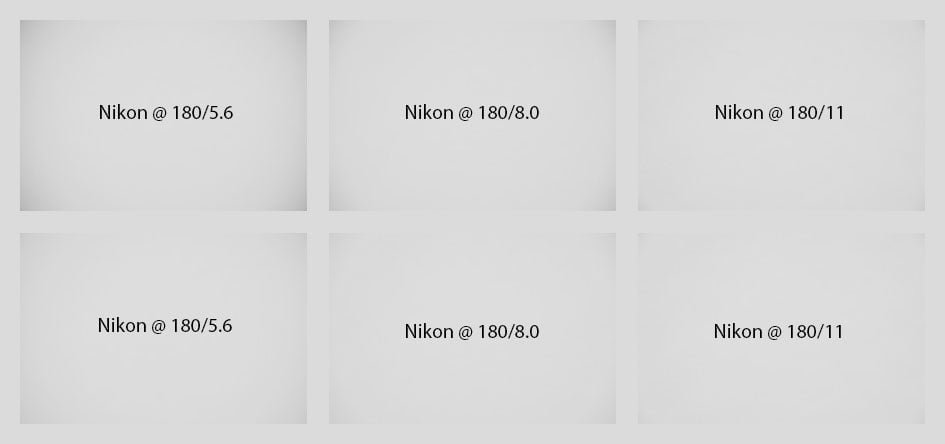
Above: Nikon Z 180-600mm f5.6-6.3 VR at 180mm focal length with vignette correction Off (top) or Normal/100% (bottom)
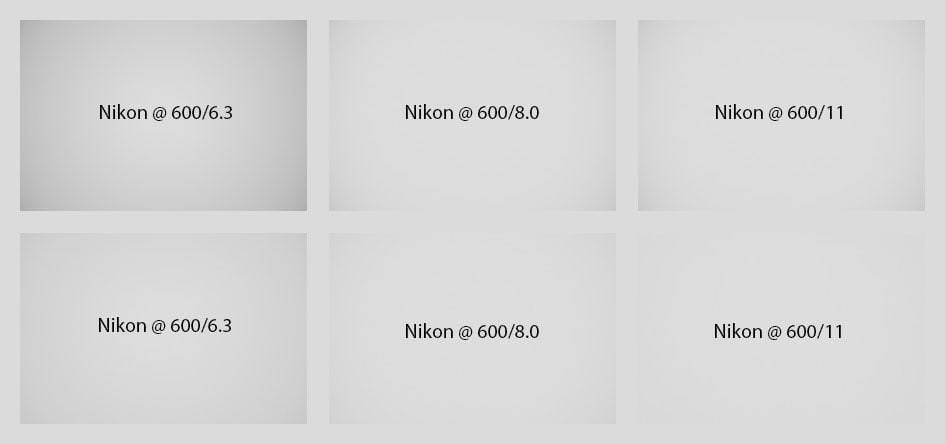
Above: Nikon Z 180-600mm f5.6-6.3 VR at 600mm focal length with vignette correction Off (top) or Normal/100% (bottom)
At 180mm vignetting is negligible even wide open. Correction with the lens profile at f5.6 lifts the FX-corner by only 0.4 EV and makes vignetting almost undetectable. At 600mm focal length light fall-off is a bit stronger. Adobe’s lens profile now lifts the FX-corner by 0.5 EV at f6.3 which still leaves a bit of falloff uncorrected. Btw.: Adobe’s RAW converter disables vignette correction with the supplied lens profile when vignette control in camera was set to off.
Uncorrected distortions are of the pin-cushion type at 180mm as well as 600mm focal length and quite visible. But the Adobe-supplied lens profile corrects them well. The following composite image shows the upper half of two images shot as RAW and developed with the Adobe-supplied lens profile):
Distortions: Nikon Z 180-600mm f5.6-6.3 VR at 180mm, distortion correction Off (top) or 100% (bottom); click image for 4k version
Distortions: Nikon Z 180-600mm f5.6-6.3 VR at 600mm, distortion correction Off (top) or 100% (bottom); click image for 4k version
Rendering of point-light sources at night-shots
Night-shots pose a different challenge for lenses as the contrast is even higher than under bright sun and point-light sources can reveal some weaknesses such as coma, haloing and colour-aberrations that do not show up as prominently in other test-shots. The 100% crops below the main image show the effect of coma in the FF-corner of the Nikon Z 180-600mm f5.6-6.3 VR at 180mm focal length and different apertures:
Above: Nikon Z 180-600mm f5.6-6.3 VR at 180mm, f5.6; click image for 4k version, here for large original

Above: Nikon Z 180-600mm f5.6-6.3 VR at 180mm; 100% crops from the FX-corner at f5.6 (left), f8.0 (middle), f11 (right)
The Nikon Z 180-600mm f5.6-6.3 VR is practically free of coma even wide open. The test also revealed no unwanted color artifacts around bright streetlights. The lens produces some sunstars (diffraction spikes) but only when stopped down to f11 or beyond.
Bokeh quality
This test is for the rendering of point-light sources in an out-of-focus background. The circle of confusion that is produced by the test is pretty indicative of Bokeh performance (in the background) and light fall-off. Ideally the out-of-focus image of the point-light is evenly lit and perfectly circular, with no “onion-rings”, and without coloration. Lenses normally produce an effect known as “cat’s eye” the further away from the optical axis the point-light is projected. This is due to optical vignetting in the lens barrel when light enters the lens from an angle.
Above: Nikon Z 180-600mm f5.6-6.3 VR at 600mm, f6.3; 4k versions available at f6.3, f8.0, f11
The diameter of the Bokeh balls in the center is determined by the entrance pupil of the lens which is 95mm. Compression of the circle towards the corners is relatively mild wide open. The circle of confusion in the center is perfectly circular up to f8.0 – which is the reason you cannot produce any diffraction spikes with this lens until stopped down to f11. The inside of the Bokeh balls is smoothly textured, without onion rings, and only some mild outlining – albeit without coloration from loCA.
Head over to my page with sample images to get a better impression of how Bokeh of the lens looks in different situations. I personally find it smooth in the transition zone and background with hardly any double contours.
Close-up performance
The Nikon Z 180-600mm f5.6-6.3 VR achieves a maximum magnification of 1:6.2 in close-up shooting at 180mm focal length where the area of sharp focus is just 145 x 223mm. The following shots were done at 1:6.7 magnification with crops from 0mm, 12mm, and 20mm off the center of the sensor respectively.
Nikon Z 180-600mm f5.6-6.3 VR at 180mm, 1:6.7 magnification; 100% crops

Above: Nikon Z 180-600mm f5.6-6.3 VR at 180mm, f5.6

Above: Nikon Z 180-600mm f5.6-6.3 VR at 180mm, f11
While the center is very sharp already at f5.6, the DX-corner needs stopping down to f11 to become ok and the FX-corner stays mushy even when stopped down beyond f11. Field curvature plays a role but even focusing specifically for each crop (see following images) does not lift sharpness by much:
Nikon Z 180-600mm f5.6-6.3 VR at 180mm, 1:6.7 magnification; 100% crops

Above: Nikon Z 180-600mm f5.6-6.3 VR at 180mm, f5.6

Above: Nikon Z 180-600mm f5.6-6.3 VR at 180mm, f11
At 600mm focal length the lens achieves a maximum magnification of 1:3.9 and the area of sharp focus is just 94 x 140mm. The following shots were done at 1:4.3 magnification with crops from 0mm, 12mm, and 21mm off the center of the sensor respectively.
Nikon Z 180-600mm f5.6-6.3 VR at 600mm, 1:4.3 magnification; 100% crops

Above: Nikon Z 180-600mm f5.6-6.3 VR at 600mm, f6.3

Above: Nikon Z 180-600mm f5.6-6.3 VR at 600mm, f11
Again the center is pretty sharp already at f6.3, but field curvature still mars acuity outside the center. See the following crops which were each focused specifically and show improved sharpness especially outside the DX image-circle. So this is not a lens to excel in close-up shots of flat subjects but once you stop down to f11, keep your main subject centered and focus at the correct spot you can get very usable results. And with a working distance of a bit over 2m you are in a very good position to capture small creatures which would otherwise shy away from too close proximity
Nikon Z 180-600mm f5.6-6.3 VR at 600mm, 1:4.3 magnification; 100% crops

Above: Nikon Z 180-600mm f5.6-6.3 VR at 600mm, f6.3

Above: Nikon Z 180-600mm f5.6-6.3 VR at 600mm, f11
Next check out my sample images!
Check prices on the Nikon Z 180-600mm f5.6-6.3 VR at B&H, Adorama, WEX UK or Calumet.de. Alternatively get yourself a copy of my In Camera book, an official Cameralabs T-shirt or mug, or treat me to a coffee! Thanks!